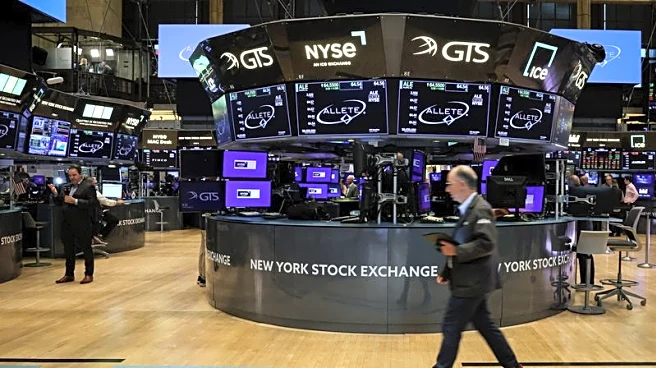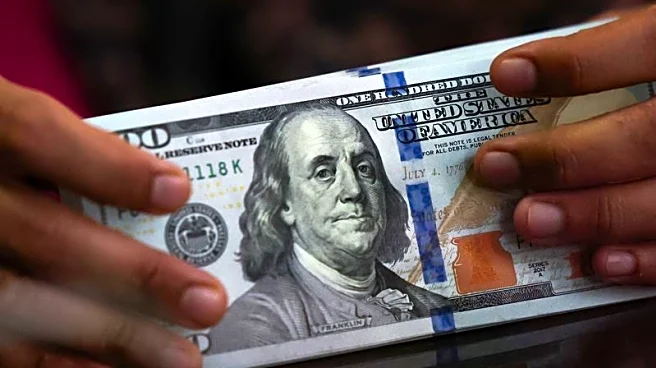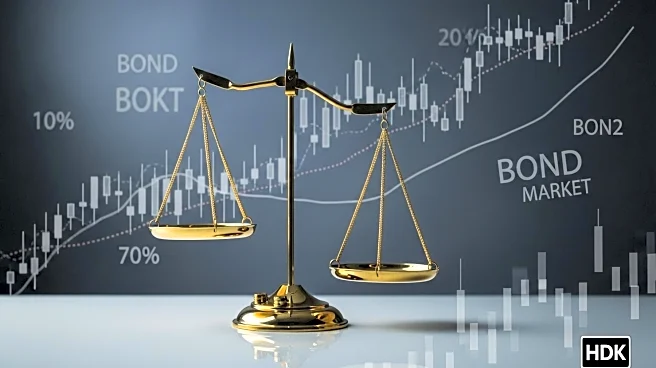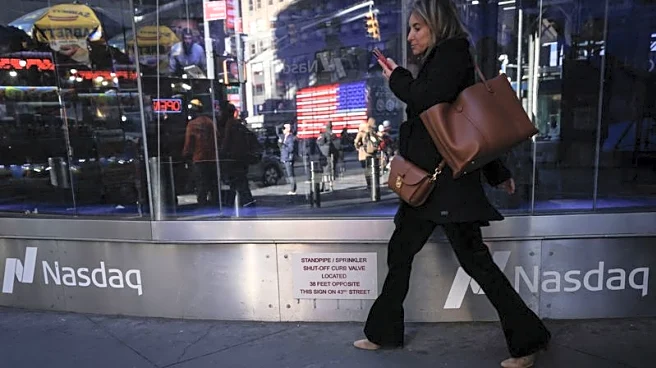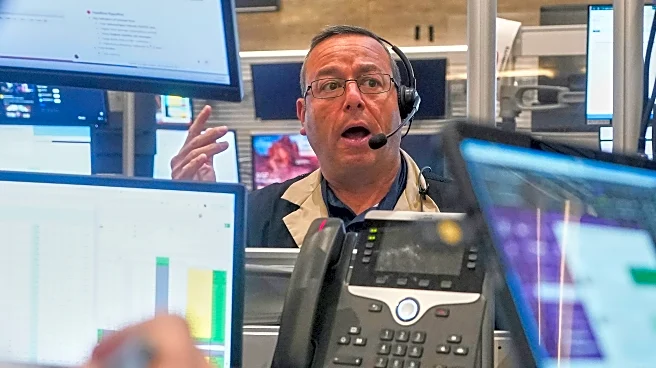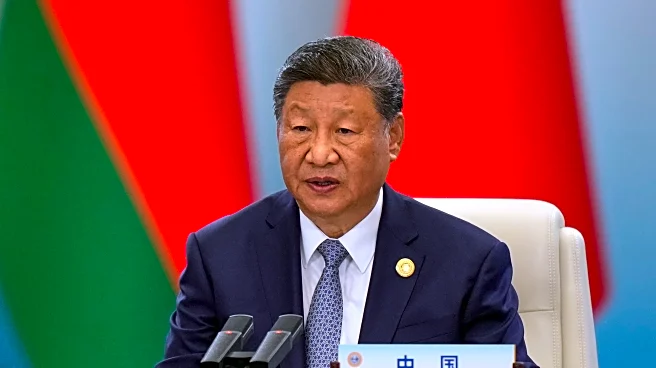By Jamie McGeever
ORLANDO, Florida (Reuters) -TRADING DAY
Making sense of the forces driving global markets
By Jamie McGeever, Markets Columnist
Stock markets around the world slumped on Tuesday while bond yields rose and gold hit a new high, as investors moved into "stagflation" trades against a backdrop of rising worries over tariffs, inflation and deteriorating government finances.
More on that below. In my column today, I look at the so-called "September effect" in U.S. and other stock markets. History
shows September is by far the worst month of the year for equities - will this year be any different?
If you have more time to read, here are a few articles I recommend to help you make sense of what happened in markets today.
1. European bond yields at multi-year highs on fiscaljitters, stocks stumble 2. Gold hits record high over $3,500 per ounce, as focusturns to payrolls data 3. Fed at a potential pivot point on jobs as storylinesdiverge 4. Tariff challenge thickens market fog and confusion: MikeDolan 5. Japanese investors are leaving the reflation trade toforeignersToday's Key Market Moves
* STOCKS: Wall Street indexes end between 0.55% and 0.8%lower, Europe falls much more, Asia not as much. * SHARES/SECTORS: U.S. real estate sector slumps 1.7%,biggest fall in a month. Nvidia shares lowest since July 23, off8% since Q2 results, Kraft Heinz shares tumble 7% as companysays it will split. * FX: Dollar rallies broadly, dollar index +0.6%. Sterlingslumps 1.1%, biggest decliner across global FX today, as UKfiscal fears snowball. * BONDS: Long-dated yields spike, curves steepen. UK30-year gilt yield above 5.70% for first time since 1998, Frenchequivalent the highest since 2009. * COMMODITIES: Gold leaps to record high of $3,540/oz.Today's Talking Points:
* Long bond blues
Debt and deficit worries are intensifying, and no major economy is immune. Japan's 30-year yield touched record highs last week and now Europe is in the spotlight - Britain's 30-year yield is the highest since 1998, and France's the highest since 2009. Fiscal dominance?
The UK sold a record amount of 10-year bonds on Tuesday but paid the highest price since 2008. Britain has heavy borrowing needs, slow growth and the highest inflation in the G7. And France won't get its fiscal house in order any time soon as the government faces collapse, which would force snap elections.
* Gold glitters
Gold rose on Tuesday for the sixth day in a row, its longest winning streak in a year. It has risen 6% in that period, and today posted a new high of $3,540 an ounce. Is this portfolio reallocation, a dovish Fed trade, or flight to safety?
It's probably all of the above, with the safe-haven element figuring more prominently in investors' recent thinking. Then there's inflation. Tariff-driven price hikes combined with loose fiscal policy in many major economies are fueling inflation fears and driving up long bond yields. A perfect storm for gold.
* Tariff-ic
Just when much of the uncertainty around Washington's tariffs had died down, a U.S. federal appeals court ruled on Friday that most of them are illegal. They remain in place and President Donald Trump said the administration will file an appeal with the Supreme Court on Wednesday and request a quick decision.
But it's a headache investors could do without as the worst month of the year for stocks gets underway. Figures on Tuesday showed U.S. manufacturing contracted for a sixth straight month in August, and from a global viewpoint, pictures of China's Xi Jinping, Russia's Vladimir Putin and India's Narendra Modi smiling together in Beijing on Monday won't have been lost on investors either.
Anxious Wall Street braces for jumbo 'September effect'
Data going back decades shows that, on average, September is the worst month for U.S. stocks – and by a considerable margin. So should investors brace for another bumpy ride this year? Almost certainly, and not just because of the "September effect."
If the market saying "Sell in May and go away" had any validity, September would be a bumper month, with investors returning from their summer holidays eager to buy back stocks that, presumably, had become cheaper since Memorial Day.
But history suggests the opposite.
Since 1950, the S&P 500's average return in the month of September is -0.68%, according to Carson Group's Ryan Detrick. If you round to one decimal place, September is the only month with an average negative return in the last 75 years.
And there have been more "down" than "up" Septembers over this period. The S&P 500 has only posted positive returns in September 44% of the time since 1950, the lowest positivity rate for any calendar month and the only one below 50%.
And the performance appears to be getting worse. In the last decade, the S&P 500's average September return has been near -2%.
TOTAL OUTLIER
There is no obvious explanation for those seasonal factors.
Some analysts point to the looming fiscal year-end, as fund managers may seek to dump their worst-performing stocks. Others say tax-related selling is a factor, again because fund managers are shedding their losing positions, this time to limit or offset capital gains.
Investor psychology could also be at play. Investors, having experienced decades of lousy Septembers, may return from their summer holidays expecting a tough month. This caution can turn into pessimism, which can lead to selling, resulting in a self-fulfilling prophecy.
However dubious these explanations may be, the numbers don't lie. For much of the last century, September has been the cruelest month for global equity investors.
EYES WIDE OPEN
The stage is set for a particularly rocky September this year.
Wall Street's main indexes are at or near record highs, valuations are getting stretched, especially in the tech sector, and market concentration has never been greater.
True, momentum appears to be on the bulls' side. The S&P 500 and Nasdaq have been up for four and five consecutive months, respectively. And as the second-quarter earnings season wraps up, nearly 80% of companies have reported profit and revenue above analysts' estimates, compared with long-term averages of 67% and 62%, respectively, according to LSEG data.
On top of that, investors can likely expect a Federal Reserve rate cut on September 17, if rates futures market pricing is accurate.
But all of that is already "in the price," to use traders' parlance. And Wall Street's momentum is slowing as monthly gains have steadily diminished over the summer, especially for the Nasdaq, which rose 1.6% in August compared with 9.6% in May.
What happens next will likely largely depend – like most things in markets this year – on what happens in the technology sector. Tech stocks are by some valuation metrics the most expensive they have been since the dotcom bubble burst 25 years ago.
Investors appear to have noticed, as they have recently started rotating out of tech and into cheaper small caps. Given the record-high market concentration in this sector, a continuation of this trend could weigh heavily on the broader market.
So this September could be volatile, at the very least. Past results are no guarantee of future performance, of course. But caution is warranted. As Porter Collins, co-founder of Seawolf Capital, recently posted on X, when markets are this extended, an "eyes wide open approach" is advisable. With so many potential catalysts for a correction looming this September, investors would be wise not to look away.
What could move markets tomorrow?
* Australia GDP (Q2) * Reserve Bank of Australia Governor Michele Bullock speaks * South Korea GDP (Q2, revised) * UK PMI (August, final) * Bank of England's Sarah Breeden and Catherine Mann speakat separate events * European Central Bank President Christine Lagarde speaks * Euro zone PMI (August, final) * Euro zone PPI inflation (July) * U.S. durable goods (July) * U.S. JOLTS job openings (July) * U.S. Chicago PMI (August) * Federal Reserve officials scheduled to speak include St.Louis Fed President Alberto Musalem and Minneapolis FedPresident Neel KashkariWant to receive Trading Day in your inbox every weekday morning? Sign up for my newsletter here.
Opinions expressed are those of the author. They do not reflect the views of Reuters News, which, under the Trust Principles, is committed to integrity, independence, and freedom from bias.
(By Jamie McGeever; Editing by Nia Williams)
